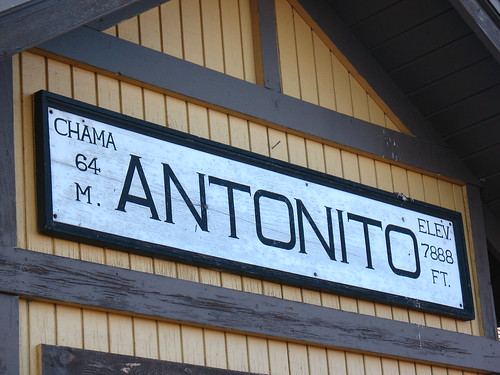Danger on the rail
Back in the late 1880s, railroading was a dangerous business. This map from the Spatial History Lab at Stanford University shows the number of accidents in Colorado during just 12 months in 1883-1884, with at least 100 accidents. It seems like most accidents happened at the Division Points (Denver, Pueblo, La Junta, and Salida), where there were large stations, with extensive railyards and a lot of switching trains back and forth. Maybe those accidents weren't as bad as those happening out in the high mountain passes (such as Marshall Pass, up at 11 000 feet (over 3300 m) or so). Check out this amazing map of the Denver & Rio Grande Railroad's route up and through the Marshall Pass. The Marshall Pass is the home of the story about the famous phantom train, and has had many accidents over the years, like this one:
"Salida Record, Sept. 30, 1904: Yesterday evening train number 69 which leaves Salida at noon ran away down the western slope of Marshall Pass and as a result fourteen coal cars and the engine are a pile of wreckage at the bottom of the embankment. That no lives were lost is remarkable considering that this is as bad as any of the previous wrecks that have occurred at this exact spot, the last one having occurred about a year and a half ago when Harry Goldwater and Nelson Van Pelt lost their lives." (link)
Don't you find it remarkable that this text from over 100 years ago is using exactly the same grammar and words you might find in a newspaper today? Or maybe, the person typing this in modified the text? I don't think so though. This would not be true for Sweden, where the language was much more old-fashioned a hundred years ago, and quite different in both grammar and word choices. I wonder if this had to do with that the people that moved out west generally had less education and/or often immigrants and therefore needed 'simpler' grammar in their newspapers to understand better. There is a nice absence of snobbishness and pretentiousness in these newspaper paragraphs. Just the news, please.
Just because of my thoughts above I had to look up a British newspaper from 1904 (Suffolk Free Press), and the grammar is more elaborate, just like I thought (I know, this is just one of hundreds of articles that day, so my statistical sampling is very poor...):
"On Wednesday afternoon a sad and terrible accident occurred to a little boy near Pentlow Mill. The little lad's name was Samuel Clarry aged 6 years, he was crossing the railway line opposite the flood gates near the Mill. His companions were on the other side of the metals and Clarry in his eagerness to join them did not notice the approaching train and essayed on to the line. In an instant the engine was upon him, the buffer knocking him down. The poor lad's right arm being completely severed from his body and his head frightfully mangled. There have been many narrow squeaks at this place but this is the first fatality. P.C.Kent said the path over the railway was used a great deal during the summer as it led to the flour mill and to the overflow from the mill where children went to paddle." (link)
Of the places marked on this accident map, we visited Denver, Golden, Georgetown, Salida, Otto (which doesn't exist anymore, not even on Google Maps), Gunnison, Black Canyon, Montrose, Silverton, and Pueblo (now a horrific, run-down urban place). Railroads, past and present, are really engraved into the Colorado landscape and history, and I don't seem to be able to stop writing about them. Imagining the old times and tracing the steps of history fascinates me, and even more so in places where you can really see the old. You can't really imagine steam trains in New York City anymore.
I think it is interesting to note that there wasn't one single accident on the southernmost route from Silverton to Pueblo on this map (this is the line going through Durango, Chama, Antonito, and Alamosa). Either they 'forgot' to report accidents, the mapmaker didn't have any data, there weren't any trains that year (I doubt that), or the southern engineers were masters at running trains. That accident free route is the Denver & Rio Grande Railroad narrow gauge line that we rode, both from Durango to Silverton (will be posted here later), and from Antonito to Chama (see here). There weren't any accidents on this line in 2010 either, that I know of.






2 comments:
I love to read about these past-to-present comparisions LS. You blogging wonderful pieces! Thanks!
Thanks EH! :)
Post a Comment